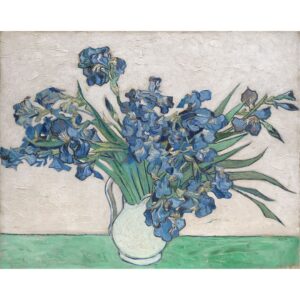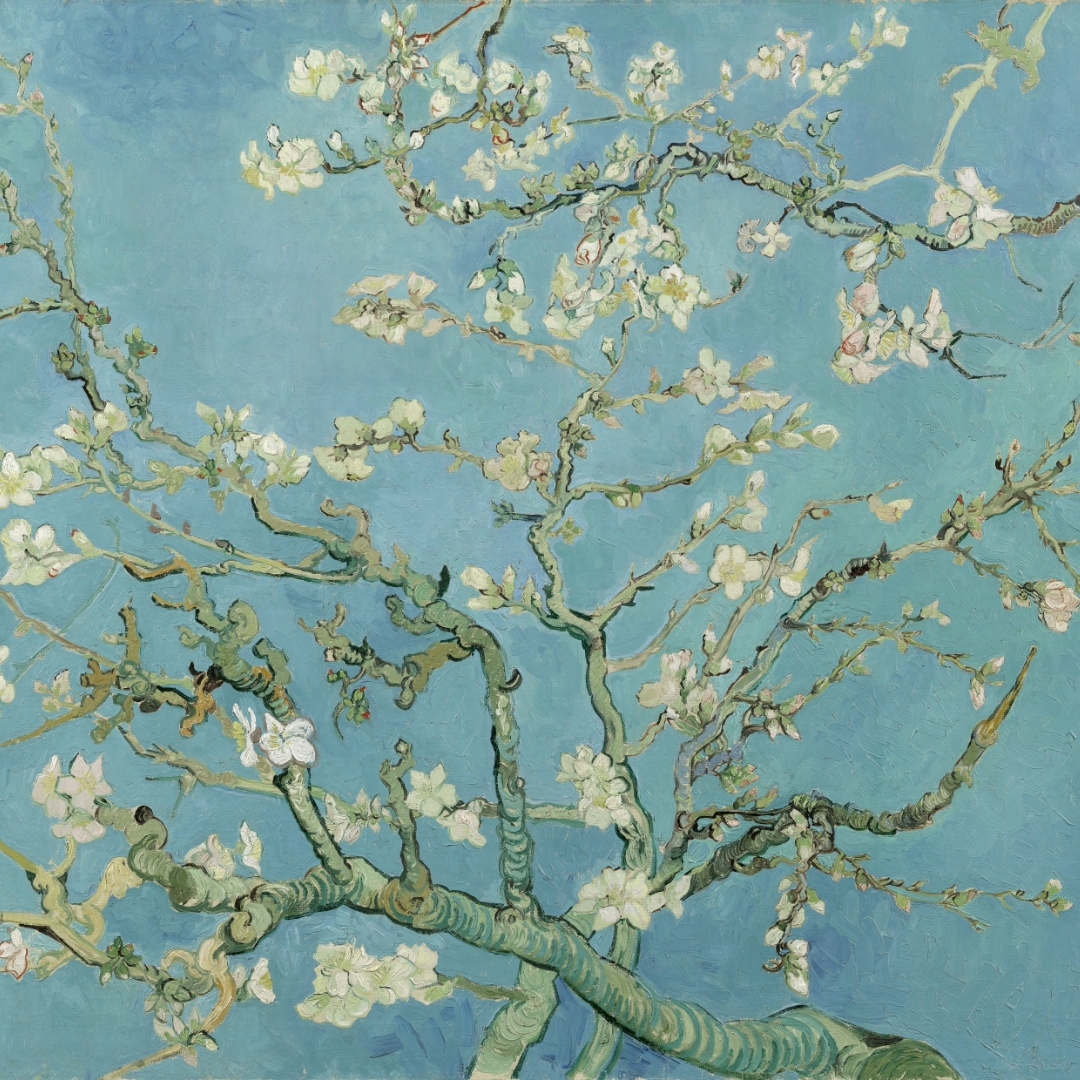Some of Van Gogh’s most iconic floral paintings, like Almond Blossom (1890) and Roses (1890), hide a fascinating secret. The delicate white blooms we see today were once vibrant pinks. This transformation is complex and poetic—much like real flowers, the red hues in many of his floral works have faded, reminding us that things are not always as they seem.
Van Gogh was particularly fond of using Geranium Lake, a brilliant red pigment made from eosin, an organic fluorescent dye. While stunning, Geranium Lake had a major flaw: it faded quickly under light, changing from a vibrant rose-red to a dull grey. Along with other red pigments he used, like cochineal (derived from crushed insects), Geranium Lake had poor lightfastness and couldn’t withstand the passage of time.
Van Gogh’s use of fugitive red pigments caused many areas of his paintings to lose colour over time. In Irises, for example, the once purple flowers faded, and the bold pink background has turned white. Similarly, in Almond Blossom, the delicate white flowers were originally soft pink, a mix of red and white that has since been discoloured. Looking closely, you can still see the faintest hint of pink in the buds.
The fading colours in Van Gogh’s paintings were only revealed through advanced techniques like X-ray fluorescence (XRF), which detects hidden traces of long-lost pigments. These analyses uncovered a history of vivid reds and pinks beneath the now-white flowers, quietly erased by time.
Van Gogh’s fading reds invite us to reflect on the stories beneath the surface, highlighting the fragile beauty of art and nature. His works remind us of how time subtly alters everything—just as flowers in full bloom are already beginning to wilt, the vibrant colours in Van Gogh’s paintings may have always been destined to fade, leaving behind a poignant reminder that nothing remains unchanged.
Source: Paintvine


